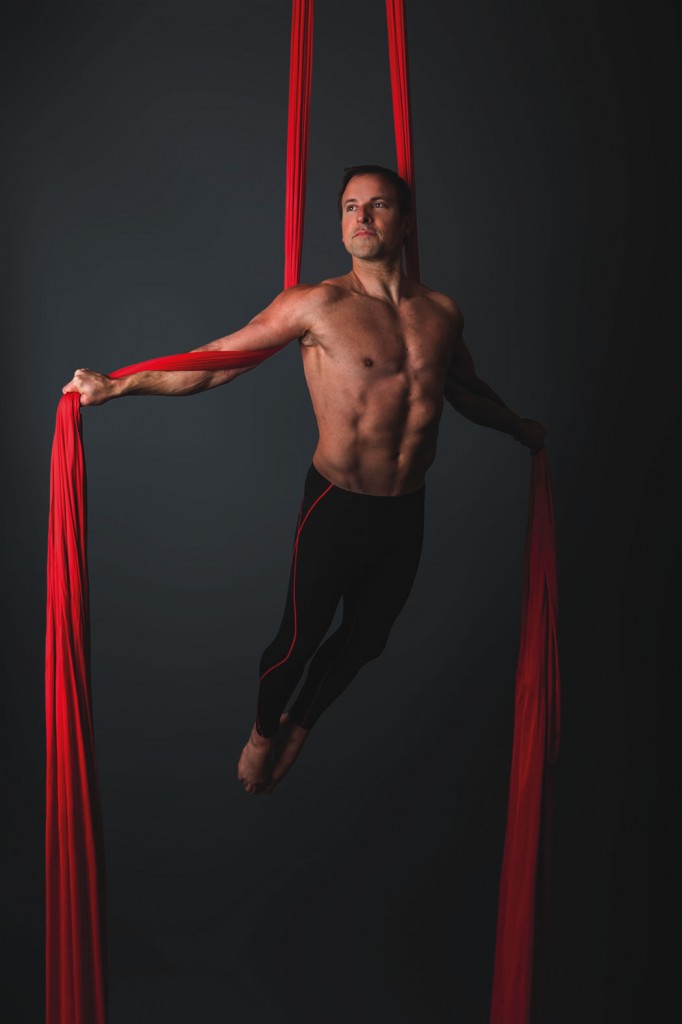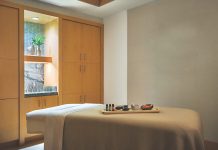Gym-goers in Newport Beach are overcoming their fears of heights—and getting in shape at the same time—with adrenaline-filled workouts on aerial silks.
By Bria Balliet
When Doug Schulein first started workingat a Club Med resort years ago as a tennis instructor, he never imagined that he would one day run his own gym, let alone an aerial fitness program. Now the owner of Aerial Fitness Orange County in nearby Costa Mesa, Doug and his team of fearless and skilled acrobats have created an experience that is as enjoyable as it is strenuous.
Once reserved for circus acts, the aerial arts—which include silks, trapeze and lyra (hoops)—have gained popularity in recent years thanks to shows such as Cirque du Soleil and acrobatic performances by musical artists like Pink. Now the practice is more in demand than ever as classes become accessible to the general public, with participants drawn to the genuine, full-body workout that lacks the monotony of a traditional gym. In Orange County, Doug’s program offers locals a chance to test their strength as they learn to climb and perform tricks with graceful athleticism.
Newport Beach Magazine: What does a typical class look like?
Doug Schulein: We don’t put more than four people in a class. I know how important it is to have the private attention. [To] warm-up, [there] is stretching, hip flexors, hamstrings … then climbing up the silks. And then there [are] basic tricks. So a beginner can—in the first 10 minutes of climbing—already be able to do three tricks. Everybody learns those three tricks the first day. Even if they can’t climb, we still teach tricks 2 feet off the ground.
What’s the first thing that people comment on when trying aerial fitness for the first time?
The first thing people say is, “Oh my God, that was awesome! I never thought I could do it.” When you go to Cirque du Soleil, you look up and go, “I wonder if I could do that?” Well, now you can.
What areas of the body get the most benefit from aerial fitness?
It is full-body. There is constant tension. It’s all stomach—all abdominals, all the time … even when you’re not thinking about it.
What are the biggest challenges when it comes to this workout?
The biggest challenge … is the fear of falling and the fear of heights. When the student’s feet get at my head level, that’s where they first realize, “I could fall and get hurt.” So, for a lot of people, that’s the freeze point. Once we get them past that, it never happens again. But it’s those first couple classes where people tense up.
So, what type of workouts can people do at home to help get in shape for your gym?
Everybody asks this. And I’ve tried desperately for the last year to come up with a home version so people can train. All you can do is just general fitness to keep yourself strong and light and flexible. That’s the best thing you can do.





